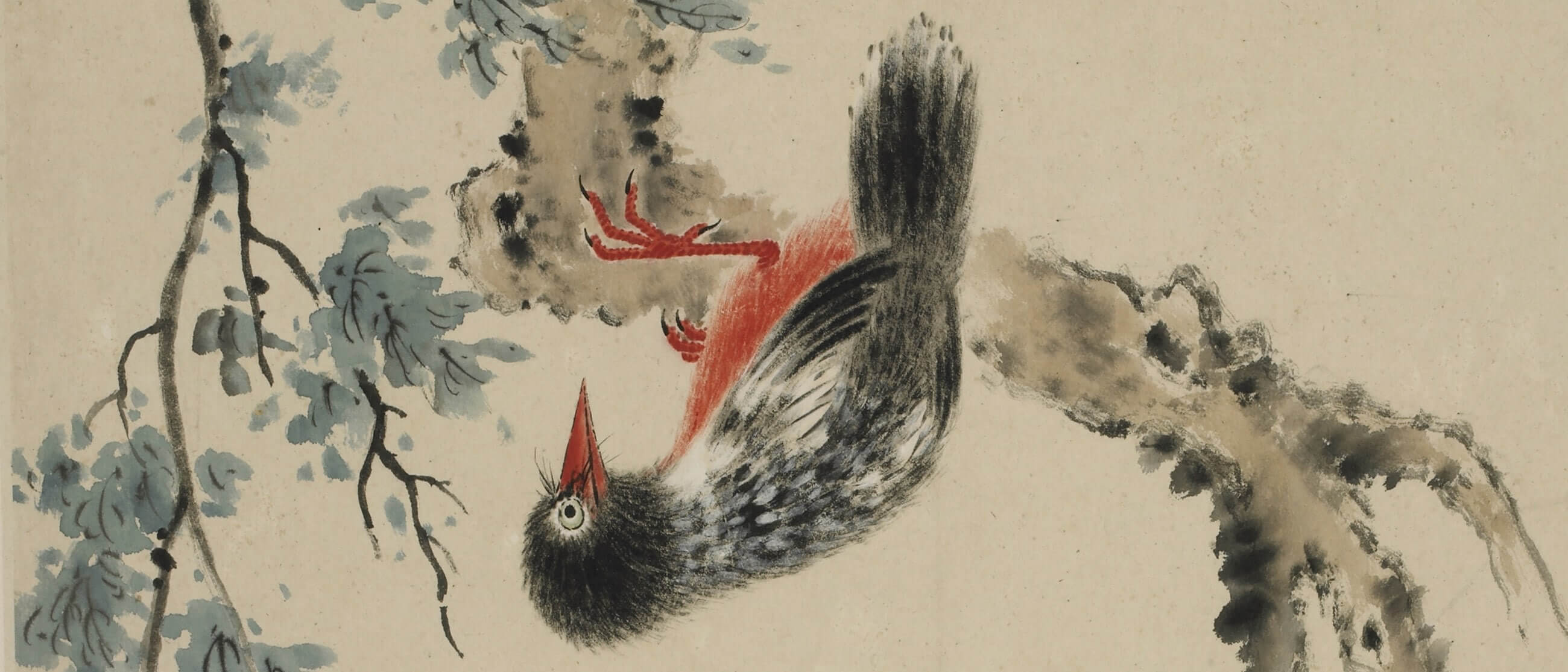Speaking in Tales: conversing in Chinese means constantly alluding to folklore
 'Winged Spirits' from the National Museum of Asian Art
'Winged Spirits' from the National Museum of Asian Art
I recently watched the famous Star Trek episode titled “Darmok.” It centers around the Enterprise’s attempt to decipher the language of a new civilization they encountered—the Tamarians. Normally, Star Fleet’s universal translators would allow the crew to speak directly with any humanoid species. However, it fails to translate the Tamarians. “Darmok and Jalad at Tanagra,” they said. What could they have meant?
It turns out that the Tamarians communicate only through references to their mythology. “Darmok and Jalad” were strangers who grew closer while facing a common enemy. The Tamarians were using allegories to ask for cooperation.
When I speak in Chinese, I speak in allegories as well. When I think someone is overestimating himself, I say he’s “Going To Ban’s Gate to Brandish an Axe.” Some of Chinese’s most common expressions are allusions to historical accounts and experiences of the Chinese people. These expressions usually come in the form of 4-character phrases called 成语 (chéng yǔ). For many of them, each character refers to a specific detail of the story, and you need to know the story to understand the idiom.
Take 班门弄斧 (bān mén nòng fǔ). It directly translates to “going to Ban’s gate to brandish an axe.” Who is Ban? What’s the significance of the axe? These are not metaphors that one can intuit meaning out of. Here’s the story: Ban was a master carpenter from China’s Warring States period. One day, someone decided to flaunt their carpenter skills in front of Ban’s house, brandishing his ax. A poet wrote about it, and now, we use the phrase to ridicule someone showing off in front of experts.
The expression only has meaning through its story. Without the background, it is impossible to use the expression. So, all Chinese language speakers have to study the stories alongside the expressions. Children in the Chinese speaking world grow up learning them1 (In Singapore, they were part of my school curriculum.) Fluency in Chinese requires a working knowledge of these tales. All Chinese speakers have a shared library of stories we can assume are common knowledge.
Chinese allows me to share my exact opinions with just a few words because I know that my recipient knows the story I’m alluding to. It is a highly compact and efficient way of communicating. I can refer to tales about everyday people, but also ones about complex military history events.
My favorite military-related chengyu is 唇亡齿寒 (chún wáng chǐ hán), which literally means “when the lips die, the teeth freeze”. The tale is about three nations. The Jin nation wants to invade the Guo nation but has to travel through the Yu nation. The counsel of Yu advised their ruler not to help Jin, for Yu and Guo are interdependent like lips and teeth. The Yu ruler helped Jin conquer Guo anyways, and after that, sure enough, Jin attacked Yu. Since then, we describe a close interdependence as “chún wáng chǐ hán”.
When I say we are “chún wáng chǐ hán”, I’m saying we’re interdependent. But am I also alluding to the story and warning that neither of us wants to end up like Cold Teeth Yu?
These phrases allow me to summon tales from thousands of years of history to give my words more weight. We learn about the great Han Dynasty general Cao Cao via 望梅止渴,2 the Zhao King in 完璧归赵3, and even General Yue Fei in 东窗事发4. The Chinese language is history fossilized into everyday conversation. It is the collected wisdom and experiences of previous generations of Chinese speakers.
I believe that reading, writing, and speaking these chengyu has shaped my cognition.5 When I see a situation in real life that parallels one of the chengyu, the story and its moral immediately come to mind.
For example, when I add new features to a traditional application, I think of the phrase 画蛇添足 (huà shé tiān zú) —“draw a snake, add feet”. The protagonist in the story was competing in a snake drawing competition and had time to spare, so he added feet. We are made to remember that he lost. We are taught that the phrase implies being “extra.” Not innovative. Not surrealistic. Not cute. Just “extra.” I inherit the tales but also particular life perspectives.
–
If the universal translator were around today, it could translate each of the 4 characters of a chengyu. But these characters mean nothing together without the story, the history, or their implied moral. Even if I were to give you the figurative meaning, my translation would lose its evocative impact when you don’t know the story I’m referring to. The only way to truly understand the phrase is to learn the story. And that’s the same conclusion the Enterprise came to in the Darmok episode.
The episode ends with Captain Picard reading the Homeric Hymns.
Notes
If you’re interested, check out this Youtube channel of chengyu stories for children: Kid Bedtime Story ↩︎
wàng méi zhǐ kě: To quench thirst by thinking of plums, meaning: to console oneself with illusions ↩︎
wán bì guī zhào: To return the jade intact to the state of Zhao, meaning: to return something to its owner ↩︎
dōng chuāng shì fā: Conspiracy under the Eastern window has been exposed, meaning: a huge secret has been exposed ↩︎
i.e. the Saphir-Whorf hypothesis ↩︎